ASUS MX299Q Monitor Review
by Chris Heinonen on September 23, 2013 12:00 AM ESTThere isn’t a good lag tester on the market that can do 2560x1080 natively. I’m sticking to using the Leo Bodnar lag tester at 1080p because it is a well-known, reliable test that is easy to duplicate. Most scalers also introduce very little delay now compared to color management and other display features.
The ASUS MX299Q helps make my point here in that even scaling the image, we see only 9ms of lag overall. No one should find fault with the performance of the MX299Q when it comes to response times. This shows companies can design displays with very little lag, even if a scaler is introduced into the signal path.
The MX299Q certainly conserves power. The most it pulls down is 38 watts, and normalized for screen size it winds up as one of the more efficient models that I have tested. Excellent results here from the ASUS MX299Q.
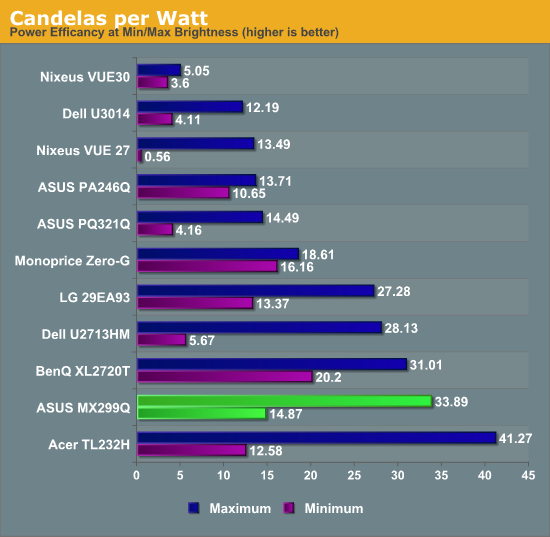
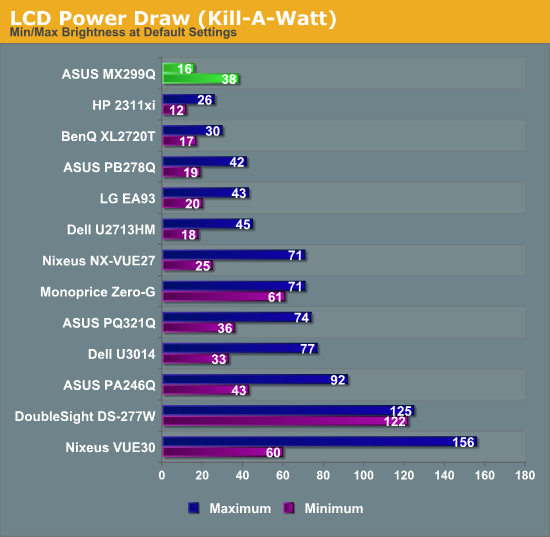
The gamut of the MX299Q also performs a bit over expectations at 75% of the AdobeRGB space. It isn’t close to enough of the AdobeRGB space to use it in that mode, but for sRGB material it will work very well.
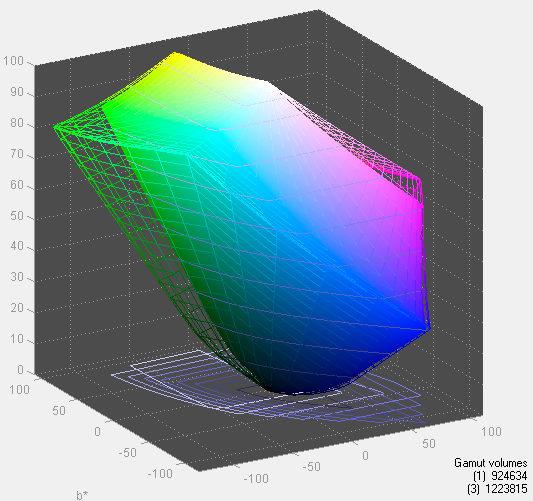
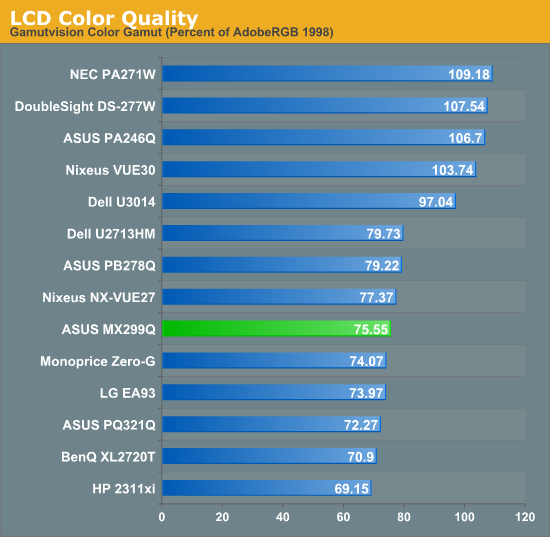


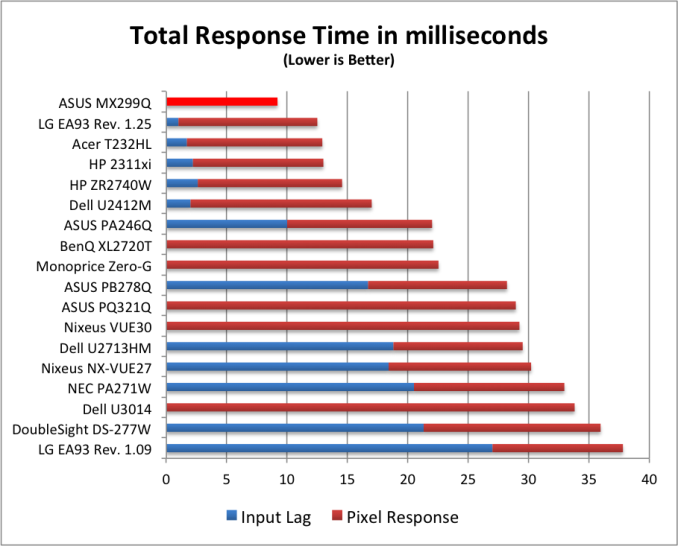








44 Comments
View All Comments
dylan522p - Monday, September 23, 2013 - link
Strongly considering getting one of these and putting it in portrait as that would be much better for web content alongside my 2 1080p monitors. Anyone think that would be viable?meacupla - Monday, September 23, 2013 - link
I don't understand how 1080x2560 is better for web content, but I think your main problem would be getting this monitor in that orientation to begin with, since it doesn't look like it has any VESA mounting for an arm that can lift the screen off the table that high.Also, web content is now being made for 1280 width in mind, so wouldn't you be better off with a 2560x1440 or 2560x1600 monitor in portrait mode?
peterfares - Monday, September 23, 2013 - link
You would. These 2560x1080 monitors are basically ONLY good for movies and some games.OscarGoldman - Tuesday, September 24, 2013 - link
Except there's no delivery medium for 21:9 movies. Blu-Ray and streaming services put the image into a 16:9 frame anyway, so the only way you're going to fill a 21:9 frame is zoom into the 16:9 image. That's gonna look wonderful.michaelheath - Tuesday, September 24, 2013 - link
I wonder if you missed the first paragraph of the conclusion:"They’re also fantastic for watching movies on that are shot in scope format."
Which I would presume means Chris actually watched a film in Cinemascope. Blu Ray supports anamorphic widescreen and can map a pixel aspect ratio of 1:1, so the only worry is Netflix.
nathanddrews - Wednesday, September 25, 2013 - link
Blu-ray does NOT support anamorphic encoding. Believe me, I would be ecstatic if that were true! 16:9 is all we get whether the content is scope (2.35/39/40), 1.78, or 4:3, wrapped up in letterbox or pillarbox black bars.An upscale for a typical scope Blu-ray (actual content is ~1920x810) to one of these screens (2560x1080) isn't so terrible, really. That's only a 33% upscale. With a good scaler or scaler software, it should look fine... but does anyone really care about black bars so much that they would buy this screen?
I would buy this for gaming and that's about it, but only if it did 120Hz. Seriously, WhenTF are we going to get more 120Hz native displays?
RocketChild - Monday, September 23, 2013 - link
Asus's other 29" model like this one has VESA mounts. Model PB298QJlHADJOE - Monday, September 23, 2013 - link
longcat. 'nuff said.DanNeely - Monday, September 23, 2013 - link
I've rotated my 2560x1600 monitor a few times. It's too tall. Even with the stand at minimum the top of the screen was too high to look at without tilting my head. If you want a monitor for portrait use stick to a 20 or 22" model.spacecadet34 - Monday, September 23, 2013 - link
You don't need this tall a monitor to do what you want; I'm currently running a triple monitor setup: two 1080P's and one (rotated) Dell @ 1200x1920. Thanks to the "keyhole problem" (http://www.aristeia.com/TKP/), virtually *every* website works better in a vertical orientation. Just make sure the rotated display is an IPS, S-PVA, or similar panel that gives decent viewing angles. A TN panel would look horrible as you move your head side-to-side. Once you get used to this setup you'll never go back, unless you're into gaming.